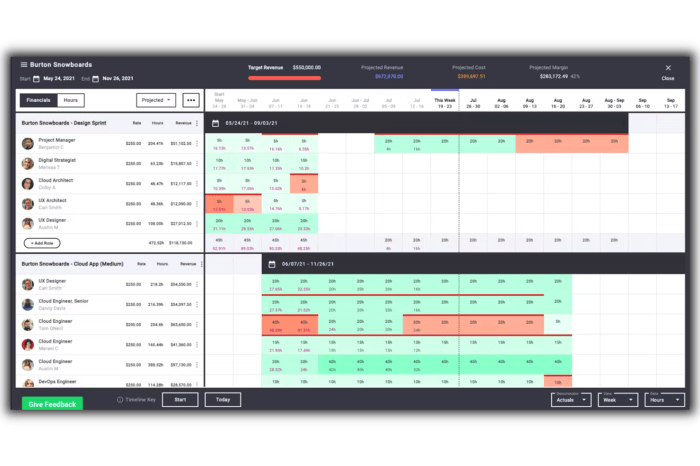Microsoft Project Scheduling Software A Powerful Tool
Project scheduling is critical for success in today’s fast-paced business environment. Microsoft Project Scheduling Software provides a robust platform for planning, managing, and executing projects across diverse industries, from construction to software development. Its comprehensive features empower project managers to visualize timelines, allocate resources effectively, and track progress against predefined goals, ultimately driving efficiency and minimizing costly delays.
This comprehensive analysis explores the capabilities of Microsoft Project Scheduling Software, delving into its features, practical applications, and comparisons with other popular project management tools. From its core functionalities to advanced techniques, this exploration will equip readers with a deeper understanding of how Microsoft Project can streamline project workflows and optimize resource allocation, ultimately contributing to successful project outcomes.
Introduction to Project Scheduling Software
Project scheduling software plays a crucial role in managing complex projects across various industries. It streamlines the planning, tracking, and execution of projects, enabling better resource allocation, improved communication, and ultimately, successful project completion. This software offers a centralized platform for managing tasks, deadlines, resources, and budgets, fostering efficiency and transparency throughout the project lifecycle.
Core Functionalities
- Task Management: Software allows users to define tasks, assign responsibilities, set deadlines, and track progress against these defined milestones.
- Resource Allocation: It facilitates the allocation of resources (personnel, equipment, materials) to specific tasks, optimizing their utilization.
- Timeline Management: Software provides tools for creating detailed project timelines, including dependencies between tasks and potential delays.
- Budgeting and Cost Tracking: Many programs allow for incorporating budget estimates and monitoring actual costs against the budget.
- Collaboration and Communication: The software often facilitates communication and collaboration among project stakeholders.
Use Cases in Various Industries
- Construction: Managing complex construction projects, from initial planning to completion, including material procurement and worker scheduling.
- Software Development: Tracking progress on software development projects, managing various stages, and ensuring deliverables meet deadlines.
- Marketing Campaigns: Scheduling and tracking activities in marketing campaigns, monitoring performance metrics, and adjusting strategies based on real-time data.
- IT Projects: Managing large-scale IT projects, ensuring all aspects are coordinated and within budget and schedule.
- Healthcare: Managing patient care, scheduling appointments, and coordinating staff resources.
Importance in Project Management

Project scheduling software is vital for effective project management because it enhances visibility into project progress, identifies potential bottlenecks, and facilitates proactive adjustments to maintain schedule and budget compliance. This leads to reduced risk of project delays, improved stakeholder communication, and overall enhanced project success.
Types of Project Scheduling Software
Project scheduling software comes in various forms, catering to different needs and preferences.
| Type | Features | Pros | Cons |
|---|---|---|---|
| Cloud-Based | Accessible from anywhere with an internet connection, collaborative features, automatic updates. | Flexibility, accessibility, cost-effectiveness (often subscription-based), scalability. | Requires a stable internet connection, security concerns if not properly managed. |
| Desktop | Offline access, potentially more customization options, often more robust features. | Offline capability, potentially more comprehensive features, control over data. | Limited collaboration features, less accessible to remote team members, higher upfront cost. |
Features and Capabilities of Microsoft Project Scheduling Software
Microsoft Project is a powerful project management tool, offering a comprehensive suite of features to streamline project planning and execution. It’s widely used for its robust functionalities and integration with other Microsoft Office applications.
Key Features
- Task Management: Users can define tasks, set deadlines, and track progress against these defined milestones.
- Resource Allocation: The software helps in assigning resources (personnel, equipment) to tasks and managing their availability.
- Gantt Charts: Visual representation of project schedules, showing tasks, durations, and dependencies.
Improved Project Planning and Execution
These features enable improved project planning and execution by providing a clear view of the project timeline, resource allocation, and potential risks. This allows for proactive adjustments and better management of the project’s overall success.
Available Views
- Gantt Chart: Visual representation of the project schedule.
- Task Usage: Displays resource allocation and utilization across tasks.
- Resource Sheet: Details resource allocation and availability.
Examples of Complex Project Scheduling
Microsoft Project is suitable for managing complex projects with multiple tasks, dependencies, and resources, including large-scale construction projects, software development projects, and marketing campaigns.
| Feature | Description | Benefit | Example |
|---|---|---|---|
| Task Dependencies | Defines relationships between tasks. | Ensures tasks are completed in the correct order. | Task A must be completed before Task B can start. |
| Resource Allocation | Assigning resources to tasks. | Optimizes resource utilization. | Assigning a specific engineer to a particular module. |




